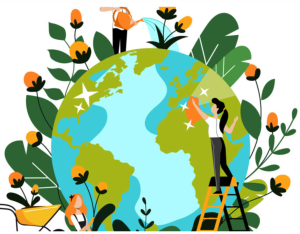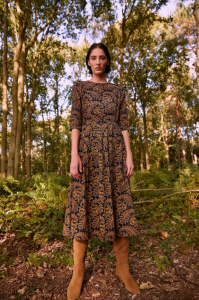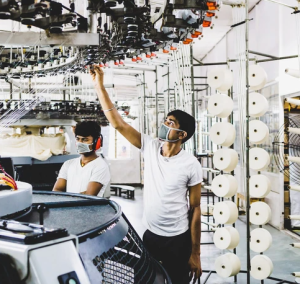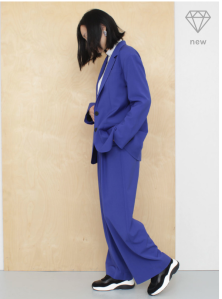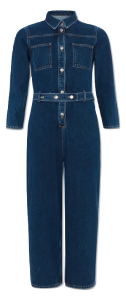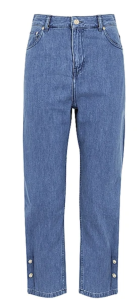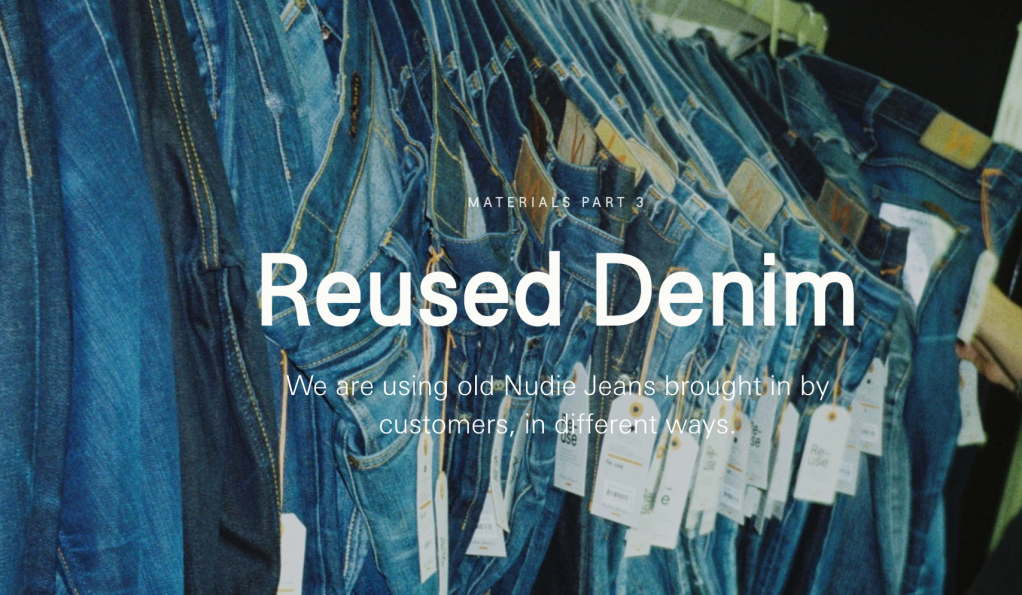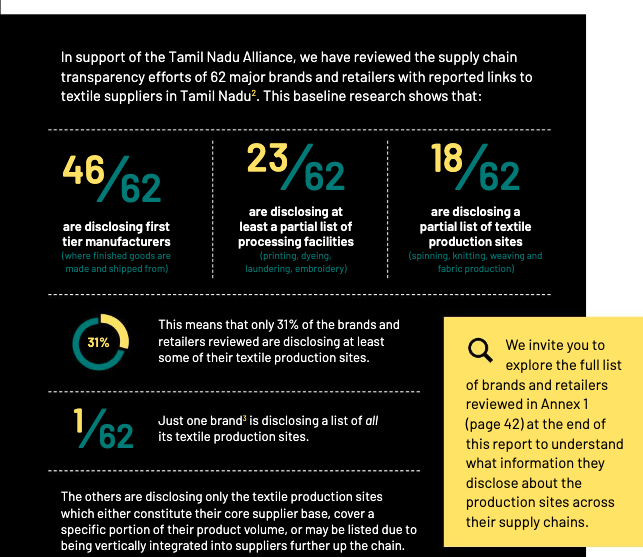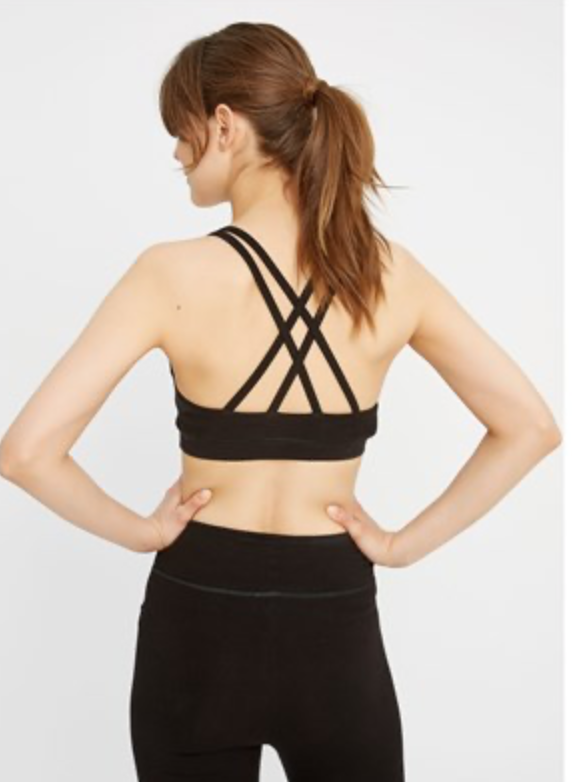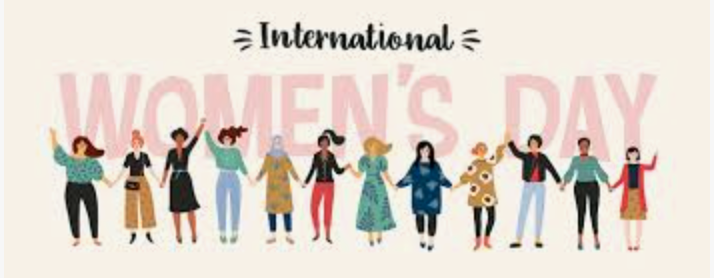
This blog is about shining a light on 10 inspirational women who are working to make this world a better place through their work in the world of sustainable fashion and beauty.
Inspiring women should be applauded every day of the year (and not just on the 8th of March). The list below might contain a few names you haven’t heard before. Stella McCartney and Vivienne Westwood deserve all the praise for their role in making the world of fashion more sustainable, but there are lots more women that deserve to be on this list. This is therefore very much a non-exhaustive list
Orsala de Castro

Orsala de Castro is spearheading a global movement calling for change in the fashion industry. After founding Fashion Revolution in 2013, she pioneered a global campaign in response to the Rana Plaza factory collapse and became an internationally recognised opinion leader in sustainable fashion.
Joline Jolink

After Joline Jolink (the Netherlands) started her own label in 2006, she shows her collections during the Amsterdam Fashion Week and New York Fashion Week. In 2008 Jolink is the first Dutch fashion designer to launch her own web-shop, in order to be able to deliver to consumers without intermediaries. The following year she decides to stop giving fashion shows. For her entrepreneurship she received the Marie Claire Prix de la Mode for Best Fashion Entrepreneur. In 2016 Jolink has completely left the traditional fashion world and set up her own system with deliberately limited editions. She lets go of the fashion seasons and brings new designs every month that are available through her own sales channels. She focuses on sustainability. She uses organic cotton, residual stocks and recycled materials. Since there are no surpluses, she also stops having sales. (1)
Kresse Wesling – Elvis & Kresse

Kresse Wesling never set out to be a designer. She’s not trained to cut or make a pattern or sketch. In fact, she can’t even sew. But that hasn’t stopped her from co-creating an accessories label that is redefining the luxury movement and helping create a circular economy based on three sustainable principles: rescue, reclaim and reuse. It’s become the model for sustainable businesses everywhere, relying on a circular economy of raw materials that has enabled it to partner with big business and established luxury brands such as Burberry to help solve fashion’s landfill problem: more than 500,000 tonnes annually in Australia, and 300,000 tonnes in the UK since 2005. They also donate 50% of profits back to charities (2). Have a look at their mission and products here.
Imelda Burke – Content Beauty & Wellbeing

Imelda Burke started Content Beauty & Wellbeing after having worked in fashion for 20 years. She felt unsatisfied with what was on offer in terms of natural beauty products and she started Content in 2008. Regarded as London’s leading organic & natural apothecary, CONTENT was founded to provide a home for the new wave of natural and organic beauty. In 2018, CONTENT evolved into a department store for all brands of the future.
Excited by seeking out founders who are creating beautiful things and who are driven by a respect for both planet and people, CONTENT is home to a curated selection of natural and organic beauty brands teamed with an edit of conscious clothing, vintage clothing, recycled and handcrafted jewellery, fair-trade and vegan shoes, books and zero waste living products – making it a destination not just for green beauty fans, but also those seeking to shop their values across categories. They are also known for their original initiatives such as lock-ins, banning the word ‘perfect’ from their product descriptions and offering VAT on sanitary products. Go to their site and have a look.
Aja Barber

Aja Barber is a writer and fashion consultant with expertise in race, intersectional feminism and fashion, focusing mostly on sustainable and ethical fashion. She is a strong supporter of intersectional feminism and feels that caring about who make your clothes goes hand in hand with that. She has challenged countless fast fashion brands, eliciting great respect in the industry for her no-nonsense view on the world. You can sign up to her Patreon site to support her work. (3)
Claudia Lanius – Lanius

“It all started with an idea: creating fashion with care of losses, create beauty with a good feeling. That was 1999 and I follow this vision until today.”
Claudia Lanius from Germany has three mantras: Love fashion, think organic and be responsible. These three themes come back in every item of clothing. The designs are unique, feminine and show a great eye for detail. Lanius takes responsibility for people, animals and the environment and uses materials produced according to controlled ecological standards. Out of love and respect for animals, they use neither real fur nor down. And when it comes to wool, Lanius sticks to a strict „no-mulesing“ policy. In terms of responsibility for people, Lanius makes sure that their production sites comply with social and environmental standards which are regularly checked by independent institutions and by them personally. Find her website here.
Laura Way – Votch

Votch is a female-led, cruelty free watch company based in the UK. Votch was founded by Laura, and she runs the company with Rolo, her re-homed pooch. Votch began when a few years back when Laura was struck down with a condition called ‘Topical Steroid Withdrawal’, a condition that made her skin fall off. During the years that it took her to recover, she turned to documentaries and educated herself on various subjects regarding animal welfare, including facts about the leather industry that truly shocked her.
“Seeing the suffering that animals endured simply for fashion, and having felt the pain of losing my own skin, I vowed never to wear the skin of another being again”. You can buy Votch by following the link under the picture above or on the site of Know the Origin where you can also find many more sustainable brands.
Livia Firth – Eco-Age

Livia Firth MBE is co-founder and Creative Director of Eco-Age – the leading consulting and creative agency specialised in integrated sustainability, and founder of the Green Carpet Challenge (GCC). She is renowned for creating compelling frameworks and campaigns for environmental and social justice with global reach.
A founding member of Annie Lennox’s ‘The Circle’, a powerful women’s advocacy group, she recently presented the findings of The Circle’s Living Wage report to the EU Commission. Livia is a UN Leader of Change and has also been recognised with the UN Fashion 4 Development Award and the Rainforest Alliance Award for Outstanding Achievement in Sustainability. She is a powerful communicator on progressive change; her keynote addresses include to the World Economic Forum.
With Eco-Age, Livia also produced the award-winning documentary The True Cost, directed by Andrew Morgan and the mini-series Fashionscapes now available on Amazon Prime. Livia also co-wrote and produced The Green Carpet Fashion Awards 2020 – the first event in the world to be filmed using augmented reality, hologram technology and special effects. The film is now available on Sky and YouTube’s Fashion Channel. (4)
Tamsin Lejeune – CEO Common Objective

Tamsin Lejeune is one of the pioneers of the sustainable fashion movement.
She founded the Ethical Fashion Forum (EFF), an industry movement for sustainable fashion, in 2006 and the SOURCE platform to support this movement in 2011. In 2016 Tamsin joined forces with Harold Tillman and the CO founding team to raise investment and launch CO. Prior to EFF Tamsin ran a fair-trade fashion brand, producing in Bangladesh. (5)
Safia Minney – People Tree

Safia Minney is the founder of People Tree, author of SLOW FASHION & A slave to Fashion. People Tree was founded in 1991 and the brand partners with social businesses who provide stable employment with fair wages alongside investment in the local community such as funding education, providing medical facilities and raising awareness of the rights of women and girls. One of the partners, Swallows, was set up to support women by providing employment and training opportunities, enabling them to provide for themselves and their families. People Tree operate under Fair Trade standards and their clothing is made using sustainably sourced fabrics. They help keep traditional hand-skills such as weaving and embroidery alive, providing an income for female artisans in rural areas who would otherwise be forced to travel to the city to make a living.
Every product on the site is made to the highest ethical and environmental standards from start to finish. People Tree gets its inspiration from the Victoria & Albert museum archives of over 1,000 individuals and organisations relating to art, design, performance and the history of the Museum.(6) Read more about Safia and People Tree here.
References and Resources
(1) https://nl.wikipedia.org/wiki/Joline_Jolink
(3) https://www.patreon.com/AjaBarber
(4) http://eco-age.com/people/livia/
(5)http://www.ethicalfashionforum.com/about-eff/team
(6) http://www.safia-minney.com/profile.html




